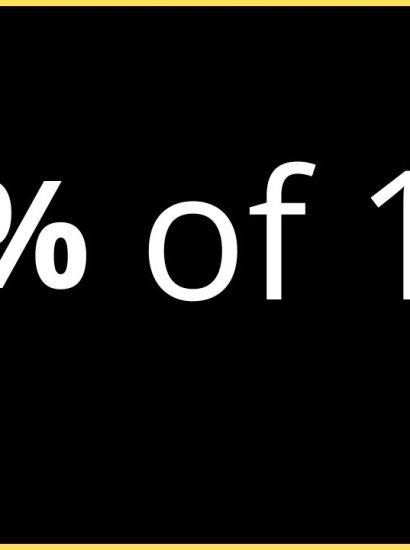Teaching kids 2 Syllable Words is an essential part of their early language development. By incorporating fun and interactive methods, children can learn these words in a way that is both enjoyable and effective. Whether you’re a parent, teacher, or tutor, this article will guide you through ten engaging ways to teach kids two-syllable words, ensuring that they grasp the concept while having fun.
2 Syllable Words: Clap and Say-Making Learning Rhythmic
One of the simplest yet most effective ways to teach kids two-syllable words is through the “clap and say” method. This technique combines auditory and kinesthetic learning, helping children break down words into their syllabic components. To implement this, choose a list of two-syllable words like “apple,” “sunset,” and “candy.” Say each word aloud and clap your hands once for each syllable: “ap-ple” (clap-clap). Then, have the child repeat after you, clapping along as they say the word. This method reinforces the concept of syllables through physical movement and engages children’s attention by making learning rhythmic and interactive.
2 Syllable Words: Syllable Sorting Games
Creating a syllable sorting game can be a fun and educational way for kids to practice identifying and categorizing two-syllable words. This activity turns learning into a playful experience. Start by preparing a set of cards with various one, two, and three-syllable words. Mix up the cards and ask the child to sort them into different piles based on the number of syllables. Focus on two-syllable words, discussing each one as they sort. This game encourages critical thinking and categorization skills while helping children visually and conceptually distinguish between words of different syllabic lengths.
Word Puzzles and Jigsaws
Using word puzzles or jigsaw puzzles can make learning two-syllable words a more tactile and visual experience. This method appeals particularly to kids who enjoy hands-on activities. You can create or purchase a jigsaw puzzle that features two-syllable words or pictures corresponding to these words. Each piece can represent one syllable, and kids can match the pieces to form the complete word. For example, “can-dy” might have two pieces that fit together to show a piece of candy. This activity strengthens problem-solving skills while reinforcing syllable awareness, making learning more dynamic and engaging.
Two-Syllable Word Songs
Music is a powerful tool in education, especially for young learners. Creating or using existing songs that emphasize two-syllable words can help kids learn in a fun and memorable way. Find or create simple songs that incorporate two-syllable words, such as “twinkle,” “spider,” or “bubble.” Sing the songs together, emphasizing the syllables as you sing, and encourage the child to clap or tap along with the syllables in the song. This approach enhances memory retention through melody and rhythm, making learning enjoyable and encouraging participation.
Syllable Hopscotch
Turning the classic game of hopscotch into a syllable-learning activity can add a physical element to teaching two-syllable words. Draw a hopscotch grid on the ground with chalk, numbering the squares 1 and 2. Write a two-syllable word on a card and show it to the child. Then, have the child hop along the grid, saying each syllable as they land on the corresponding numbers: “pic-ture” (hop-hop). This method combines physical activity with word learning, catering to active learners and reinforcing syllable segmentation through movement.
Interactive Storytime
Storytime can be a great opportunity to introduce and reinforce two-syllable words. Interactive storytelling makes the process even more engaging. Choose a storybook that features a lot of two-syllable words. As you read aloud, pause when you come across a two-syllable word and ask the child to clap, tap, or repeat the word after you. Discuss the meaning and usage of each two-syllable word in the story. This method enhances listening and comprehension skills while introducing new vocabulary, making the learning process more contextual and meaningful.
Syllable Bingo
Bingo is a game that kids love, and it can easily be adapted to teach two-syllable words. Syllable bingo turns learning into a competitive, yet friendly, game. Create bingo cards with two-syllable words written in each square. Call out words, and if the child has the word on their card, they mark it. The first to get a full line of words wins. This game encourages word recognition in a fun format, keeping children engaged and motivated through the thrill of the game.
Picture Matching with Words
Visual aids are incredibly effective in teaching children, and picture matching games can help them connect the visual representation of an object with its two-syllable name. Create or use a set of picture cards and word cards. Have the child match each picture with the correct two-syllable word. For example, a picture of a “tiger” would be matched with the word “tiger.” This activity enhances word association and recall, making abstract words more concrete through visual connections.
Crafting with Syllables
Arts and crafts can be a fantastic medium for teaching two-syllable words, making learning both creative and productive. Choose a two-syllable word and help the child create a craft related to that word. For example, if the word is “flower,” the child can make a paper flower. As they craft, discuss the word, breaking it into syllables and emphasizing each one. This approach encourages creativity while reinforcing language skills, making learning more enjoyable by combining it with a fun activity.
Digital Learning Apps
In today’s tech-savvy world, digital learning apps offer a modern approach to teaching two-syllable words. These apps often turn learning into a game, making it highly engaging for kids. Download a reputable educational app that focuses on syllable recognition and word building. Allow the child to play and learn at their own pace, with guidance as needed. Many apps provide interactive challenges, rewards, and progress tracking, offering a personalized learning experience tailored to the child’s pace.
Conclusion
Teaching kids 2 Syllable Words doesn’t have to be a tedious process. By incorporating fun, interactive, and creative methods, you can help children grasp the concept of syllables while enjoying the learning journey. Whether through songs, games, crafts, or digital tools, the key is to make learning engaging and memorable. With these ten strategies, children will not only learn two-syllable words but also develop a strong foundation for future language skills.
FAQs
1. Why is it important for kids to learn 2 Syllable Words?
Learning 2 Syllable Words helps children understand the concept of syllables, which is crucial for developing reading, spelling, and pronunciation skills. It also expands their vocabulary, making communication more effective.
2. At what age should children start learning two-syllable words?
Children can start learning two-syllable words as early as 3 to 4 years old, depending on their language development. It’s essential to introduce these words gradually and in a fun, engaging manner.
3. How can I tell if my child is struggling with two-syllable words?
If your child has difficulty breaking words into syllables, pronouncing them, or remembering them, they might be struggling. Incorporating more interactive and playful methods can help reinforce their learning.
4. Can these methods be used in a classroom setting?
Absolutely! These methods are versatile and can be adapted for individual learning, group activities, or classroom settings. They can make language lessons more dynamic and enjoyable for all students.
5. Are there any apps you recommend for learning two-syllable words?
There are several great apps available, such as “Endless Wordplay,” “Phonics Genius,” and “Syllable Splash,” which are designed to teach syllables and vocabulary in an engaging way. Always choose apps that are age-appropriate and educational.
Also read: Who on Duck Dynasty Died? 10 Heartbreaking Moments and Their Impact









